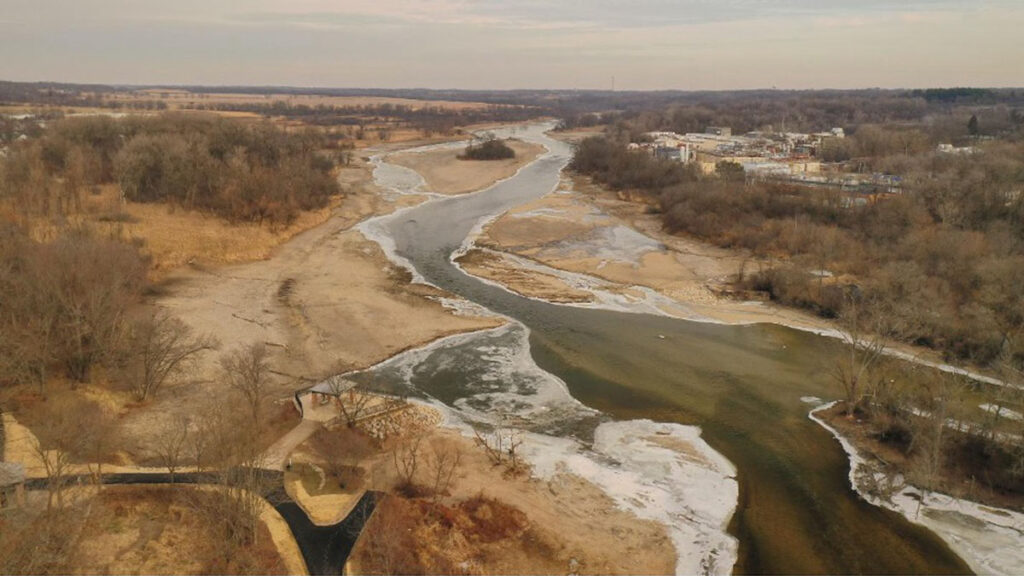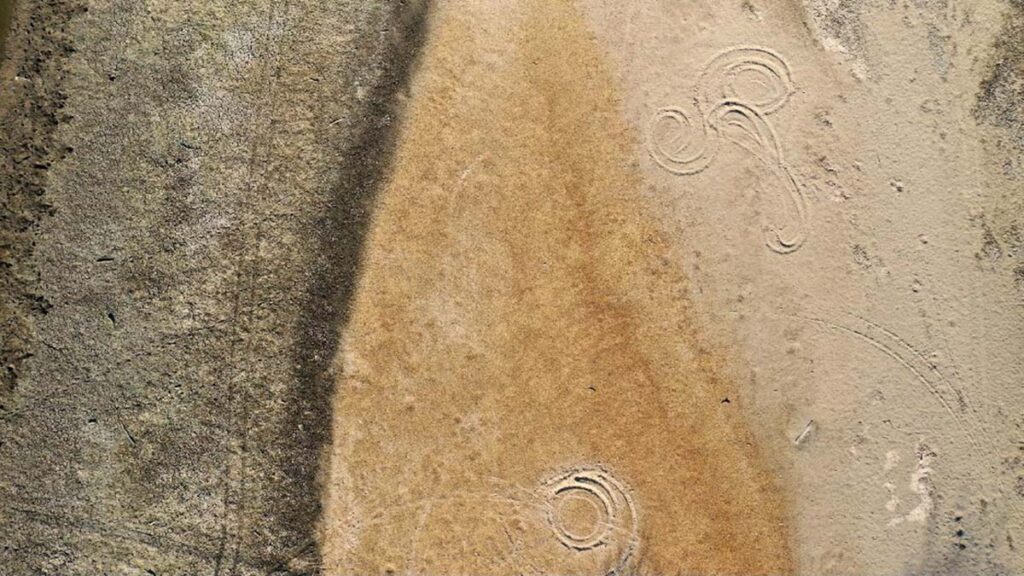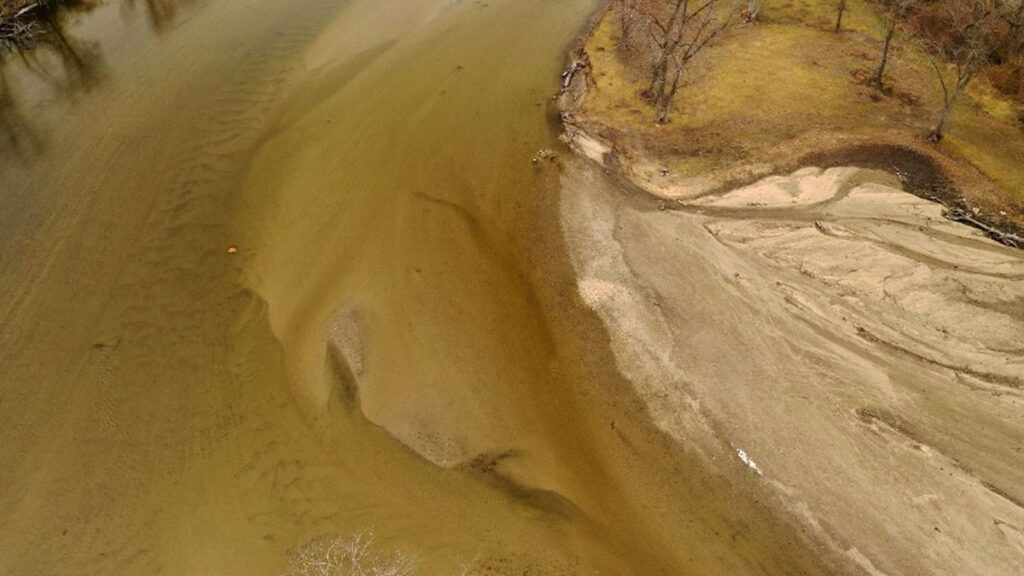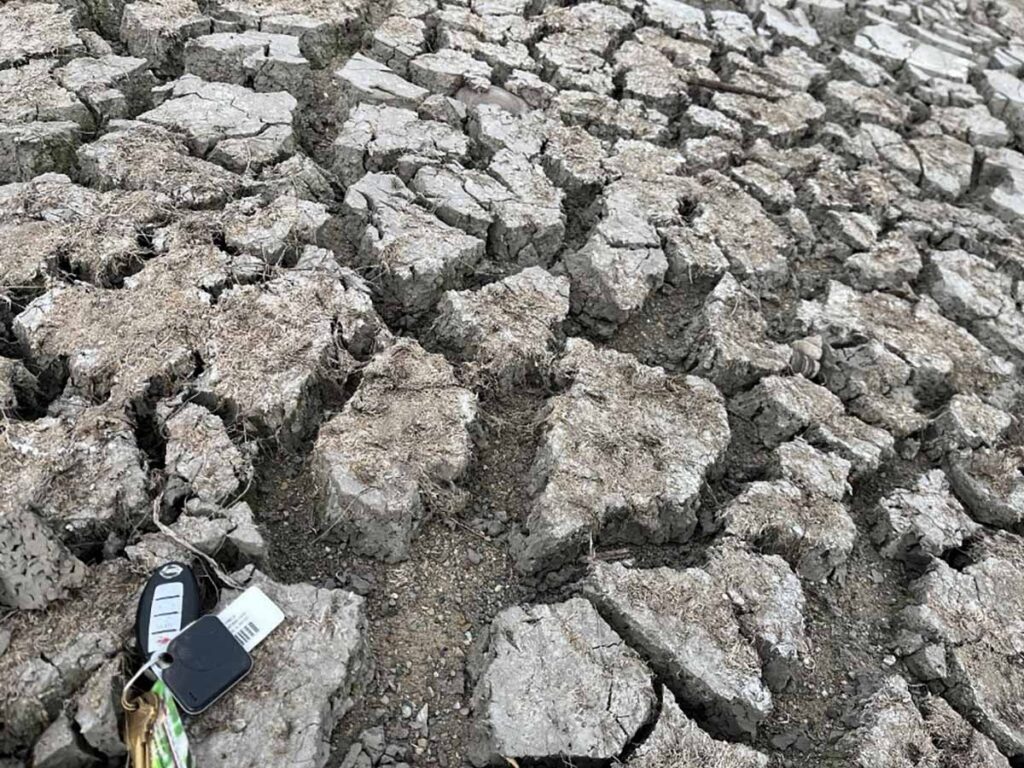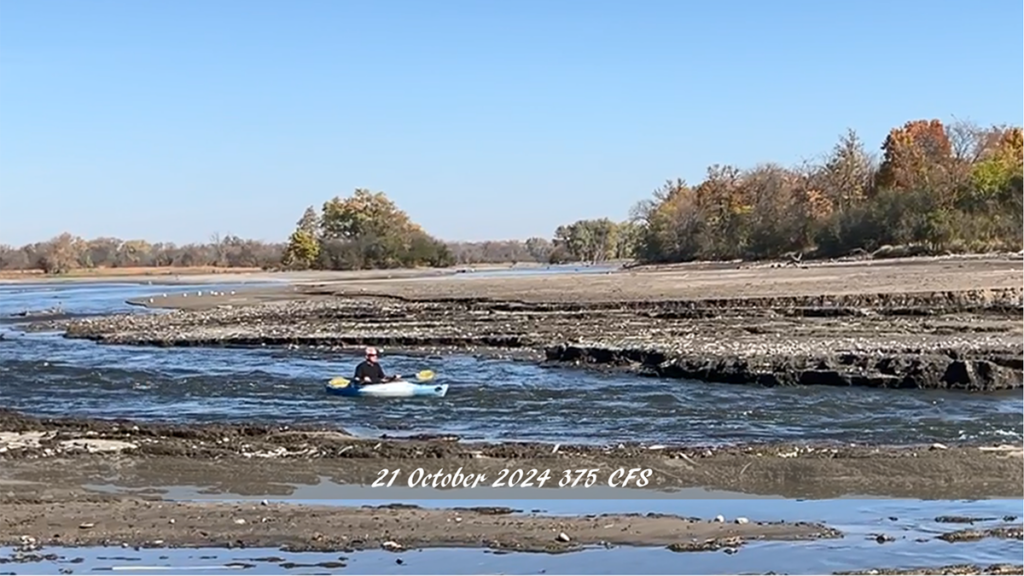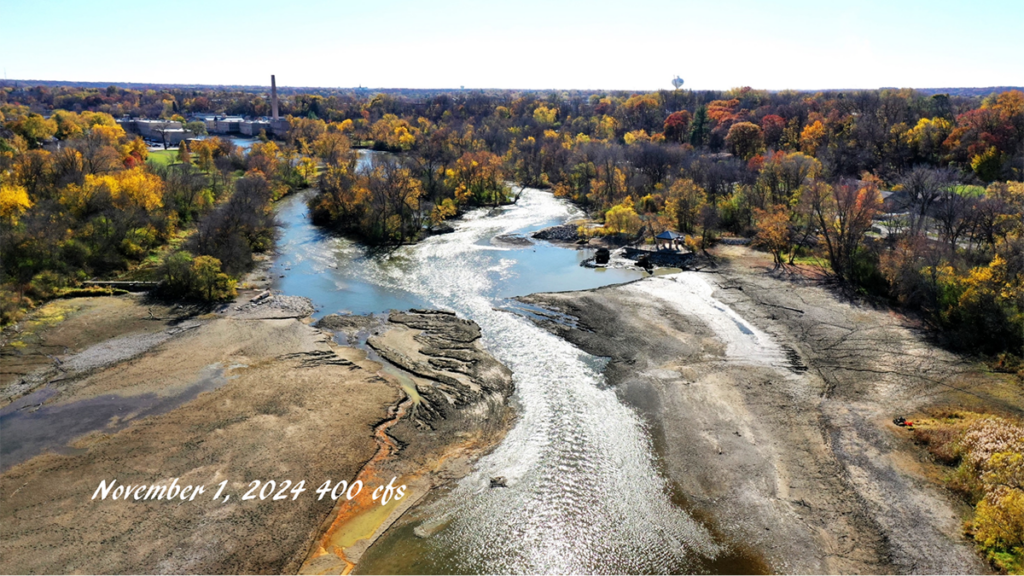Fox River Dam Removal FAQ’s
By Art Malm, FOTFR Board Member, January 28, 2025
“Say Yes” to stop dam pollution and the Fox’s flooded lands
Section 1 – Carpenter Dam removal update
It’s a new year and we’ve made some major progress towards freeing the Fox River. At the end of 2024 the most frequently asked question was, “What’s happening in Carpentersville?”
The images below highlight changes to the Fox following removal of the Carpenter Dam.
Success! The Fox is a river once again, now sleek and clean.
The egrets showed their early satisfaction often coming to watch the CAT take out the dam. The eagles remain frequent visitors today.
Large new sand beaches and fertile soil have appeared upriver, sandbars and natural beaches downriver, all with sparkling clear water.
Muck that suffocated the river impoundment has drained and become rich upland soil, ready to support new prairie sedges this spring.
And even at low flow there is plenty of room to paddle in the quick run heading towards the future takeout site below.
November 1st the workers were gone and the river set free to finish finding its own way. While the river will take a few years to fully recover, we already have rare new public lands to enjoy.
Section 2 – Ready answers for important questions
Ready answers for important questions
Personal note: We all have witnessed the effectiveness of consistent messaging. I suggest those who want to support dam removal adopt the answers below in conversations with local officials. All of these answers are objectively based and try to touch on the core reasons for this effort. If you have questions or want to learn more send us an email at dam@FOTFR.org.
Why do we want to remove the dams?
To help Fix the Fox. The Fox’s algae and sediment pollution is caused by the dams. Dam removal will help stop that pollution enabling us to help rid the river of its polluted reputation. Dam removal will also eliminate the financial burden of dam maintenance and replacement, including wrongful death liability.
Give me one good reason to remove the dams.
As with all things we borrow, we should return the river as, or better than, we found it.
That is part of the culture we inherited and that is part of our culture we must leave for our young. Most of our dams have stood idle for over a century now. It is time they are removed to undo the damage they continue to do to the Fox River.
Give me three good reasons to remove the dams.
Restore our natural heritage. Save lives. Save money…
Science and experience tell us the following:
- Dam impoundments flood and destroy the habitats of native fish, birds and other river wildlife.
- Dams are expensive and unnecessary life safety threats.
- Removing dams sustainably removes the cause of the water pollution we see as bottom sludge, heavy weeds and algae.
Restore our natural heritage. Save lives. Save money…
What if the dams remain?
- The Fox River will remain in violation of the Clean Water Act and on the list of America’s impaired waterways.
- The river bottom and shoreline will never be clean.
- The river will never lose its reputation as polluted.
- Many acres of flooded public lands will remain inaccessible above every dam site.
- Carp will continue to be dominant in the impoundments.
- Mussels with their natural water filtration function will never naturally repopulate.
- Dragonflies with their reputation to bring good fortune (and voracious appetite for mosquitos and gnats) will not return in large numbers.
- The cost of the next dam related death, repair, or dam removal, will come from the pockets of local taxpayers and future residents.Rather than removing the cause of the algae and sediment pollution with federal money today, that pollution will have to be stopped some time in the future at local expense. Twenty five years of research tells us the only way to stop algae and sediment pollution in the Fox River is to remove the dams.
Section 3 – Previous FAQs with important updates (as of 1/21/25)
What is the status of the Army Corps program to remove the dams?
There are eight dams remaining between (but not including) Algonquin and Yorkville following the successful removal of the Carpenter dam. All eight qualify for 100% state and federal funding if local municipalities agree to their removal in 2025. Work would be completed by 2030. The work would be done by the US Army Corps of Engineers and include post construction follow-up with corrections as necessary.
The opportunity for municipalities to say “Yes” will likely expire late 2025. Communities whose dam is owned by IDNR that wish to keep “their” dam will be required to assume full ownership and accompanying responsibility for the dam.
The Army Corps has received additional funding and adjusted their program to better accommodate local infrastructure and environmental concerns. These are now being addressed prior to final agreements (due late 2025) and include issues such as Elgin’s water intake, Batavia’s Depot Pond, and special sediment testing. The Army Corps’ partnership on local challenges will reduce and address unforeseen dam removal problems.
Section 4 – Previous dam FAQs with some answer updates
Many of the following FAQs first appeared and were addressed during a multi-year study published in 2003 by the Max McGraw Wildlife Foundation for the Illinois Department of Natural Resources titled “Fox River Fish Passage Feasibility Study”. The principal investigators of this study, Victor Santucci, Jr. and Stephen Gephard, drew upon the work of many fellow researchers and other experts in the broad field of aquatic life, chemistry, hydrology and geology to evaluate the impact of dams, and their possible modifications on the Fox River.

Will the river dry up after the dam is gone?
No. The amount of water flowing in the river is NOT impacted by dams. The same amount of rain and snow will fall over our watershed and drain to our Fox whether the dams are there or not.
Will removal of a dam increase flooding?
No. The dams along the Fox are NOT designed for flood protection. Dam removals will in fact reduce upstream flooding in some locations.
Studies are reported to be underway to determine which upstream shoreline properties would no longer be in FEMA flood zones and subject to expensive construction regulations and federal insurance requirements. As importantly, the river levels below the dams will remain unchanged. Downstream flooding will be unaffected by dam removal because, again, the same volume amount of water will flow downstream whether a dam is present or not.
Will the area behind the removed dam become a permanent eyesore?
No. The sediments that have filled in behind the dams over the decades will drain and Mother Nature will quickly revegetate and restore the reclaimed land. (We can help support and improve this process by being ready with good planning and plantings!)
Key takeaways from the Carpenter dam removal so far include:
- The new beaches are huge. The sediments behind the dam were largely sand, and drained quickly without odor.
- The natural sand and gravel bottom was often capped with black sandy silt that drained and will quickly revegetate.
- Until vegetation takes hold, the black sandy soil will be muddy after a rain unless frozen.
Won’t all the contaminants stored in the sediments from over a century of pollution be released creating more problems?
No. Surveys of the Fox continue to show sediment pollution levels to be low and virtually the same above and below the dams. Additional studies are being done to check out possible hot spots. It appears the industrial and agricultural water pollution from before 1970 has long since washed downstream.
Will removal of the dams cause all the sediment to wash downstream causing more problems?
No. Slowly dewatering the dam impoundment by notching the dam before major material removal allows upstream sediments to drain and avoid being washed downstream. Dam removals in similar rivers have shown that, if done gradually, there is little downstream impact although we can expect to see the return of natural sandbar habitats in the river.
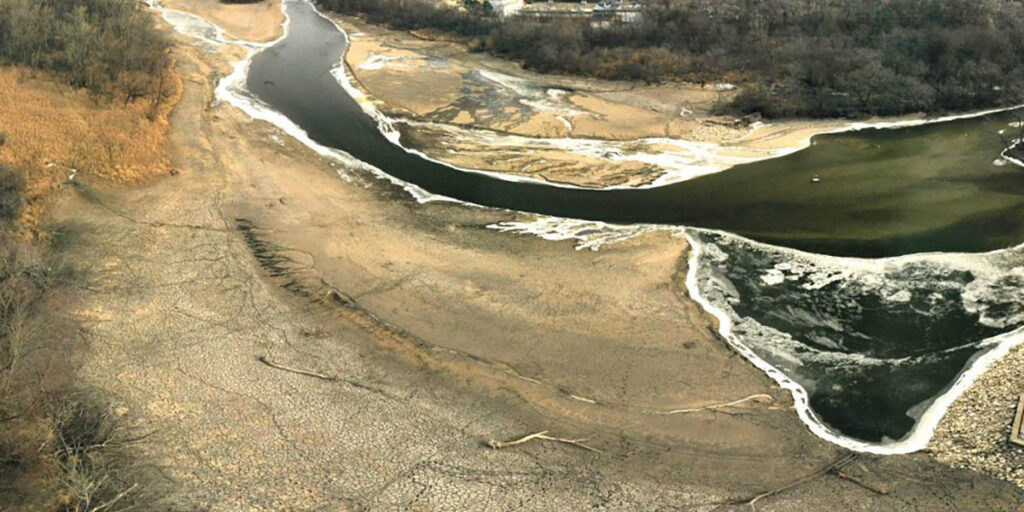
Will the release of nutrients stored in the sediments behind the dams hurt the river?
No. Studies have shown little difference in sediment nutrient levels upstream and downstream of the dams. Compared to the already high nutrient levels in the river (we’re working on that!) dam removal will cause little if any change.
Will dam removal contribute to the “Dead Zone” in the Gulf of Mexico by allowing more nutrients to flow downstream?
No. To help solve the “Dead Zone” problem we must reduce the nitrogen and phosphorus nutrients we allow to reach the Fox and its tributaries. Major work is already complete to do just that by farmers and municipalities throughout the Fox River Watershed.
Are dams needed to oxygenate the river?
No. The river oxygenates itself best and most efficiently when it runs freely downstream. Holding the river back behind the dams prevents natural oxygenation and results in the very low oxygen levels measured in the impoundments where natural habitat is smothered by silt and benthic detritus.
There is good fishing below dams. Are dams necessary for good fishing on the Fox?
No. Fish may congregate below the dams which block migration routes but there’s abundant and diverse sport fishing in all free-flowing sections of our river except above the dams. Experience consistently shows removing dams will create more and better habitat for the small creatures like mussels and macroinvertebrates that live on the river bottom and form the base of the river’s natural food chain. More and better food on the bottom results in more and better fishing all along the river.
Should all dams be removed from the river?
Yes, and no. Algonquin and Stratton Dams are keys to the Chain O’ Lakes’ regional economy and will be maintained. The Dayton Dam protects the Fox from Asian carp infestation and will also be maintained. Other than to support limited boating the dams on the central Fox are obsolete and causing significant harm to the river. Every dam removed from the Fox and its tributaries will improve the river. Any dam that remains will somewhat lessen benefits to the river as a whole, but will not negate the positive effects where dams are removed.
Will removing dams and providing fish passage facilities open up the Fox River to invasions by exotic species like Asian carp (aka “Copi”)?
Maybe, but dams can’t be relied upon to provide protection. The high dam at Dayton (five miles above the confluence with the Illinois River) keeps the silver and Bighead (Asian) carp that are in the Illinois River out of the Fox.
Other invasive species like the Common carp and Zebra mussels found their way into the Fox after the dams were built. There is evidence that the best protection against exotic invasions is a healthy, natural (free flowing) river.
For example, invasive Zebra and Quagga mussels, while found in the Fox, have a much more difficult time reproducing in free-flowing waters than still waters. Unlike our native mussel species Zebra and Quagga babies get washed down the river before they can settle and grow. limiting their populations.
As the river has been cleaned up, populations of gamefish like smallmouth bass have been increasing where pollution tolerant species like carp are in decline. Zebra mussels, while found in the Fox, have a much more difficult time reproducing in free-flowing waters than still waters, limiting their population.
“Say Yes”
“Say Yes” to stop dam pollution and the Fox’s flooded lands
Got Questions?
Do you have questions about dam removal along the Fox and its tributaries? Let us know and, together with our many partners, will do our best to answer your questions.
FOTFR was established 30 years ago to be the voice of the Fox River. Your support helps us continue to raise our voice louder to reach wider audiences and transform a culture of environmental degradation to one of protection and celebration.

